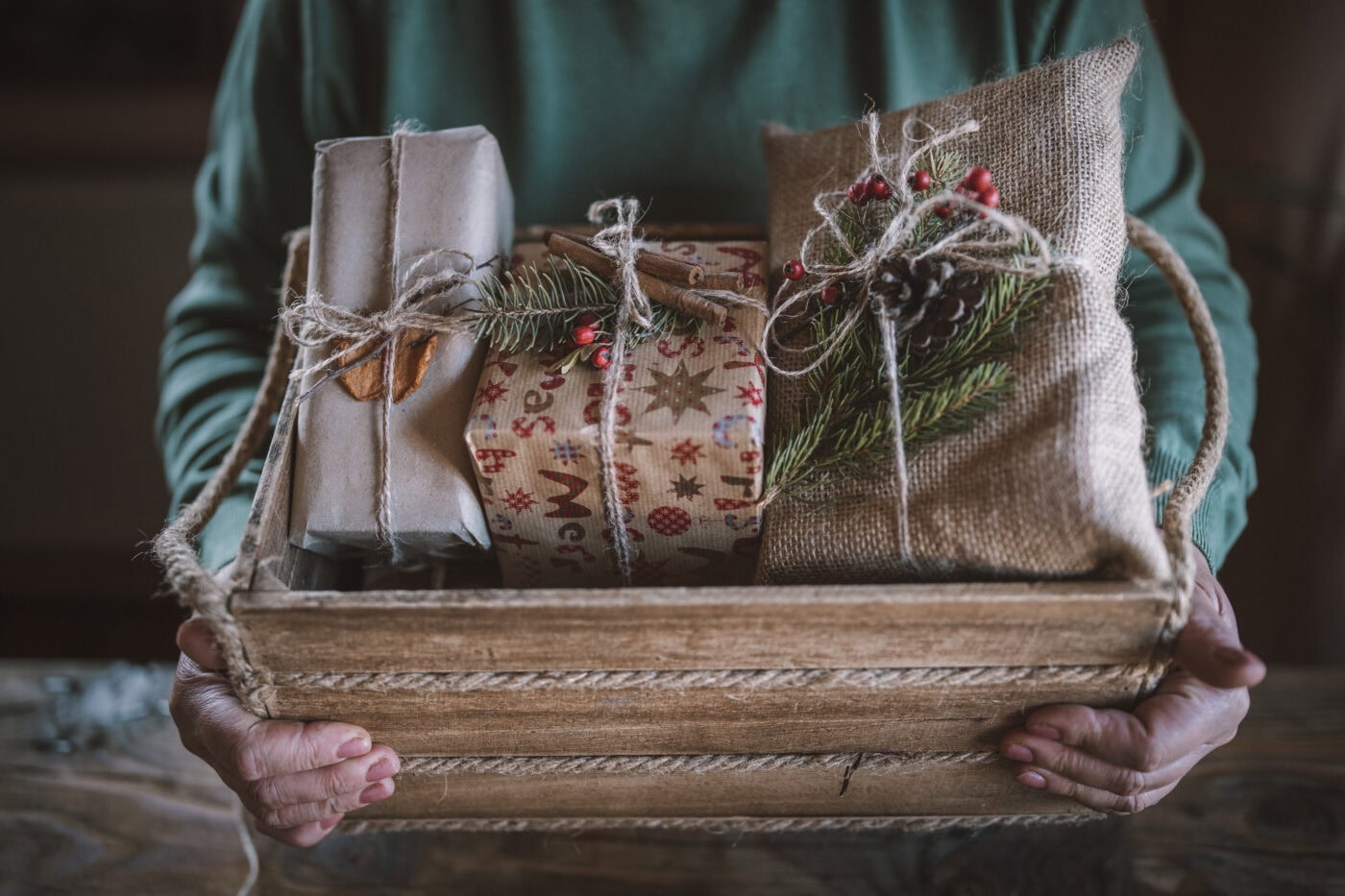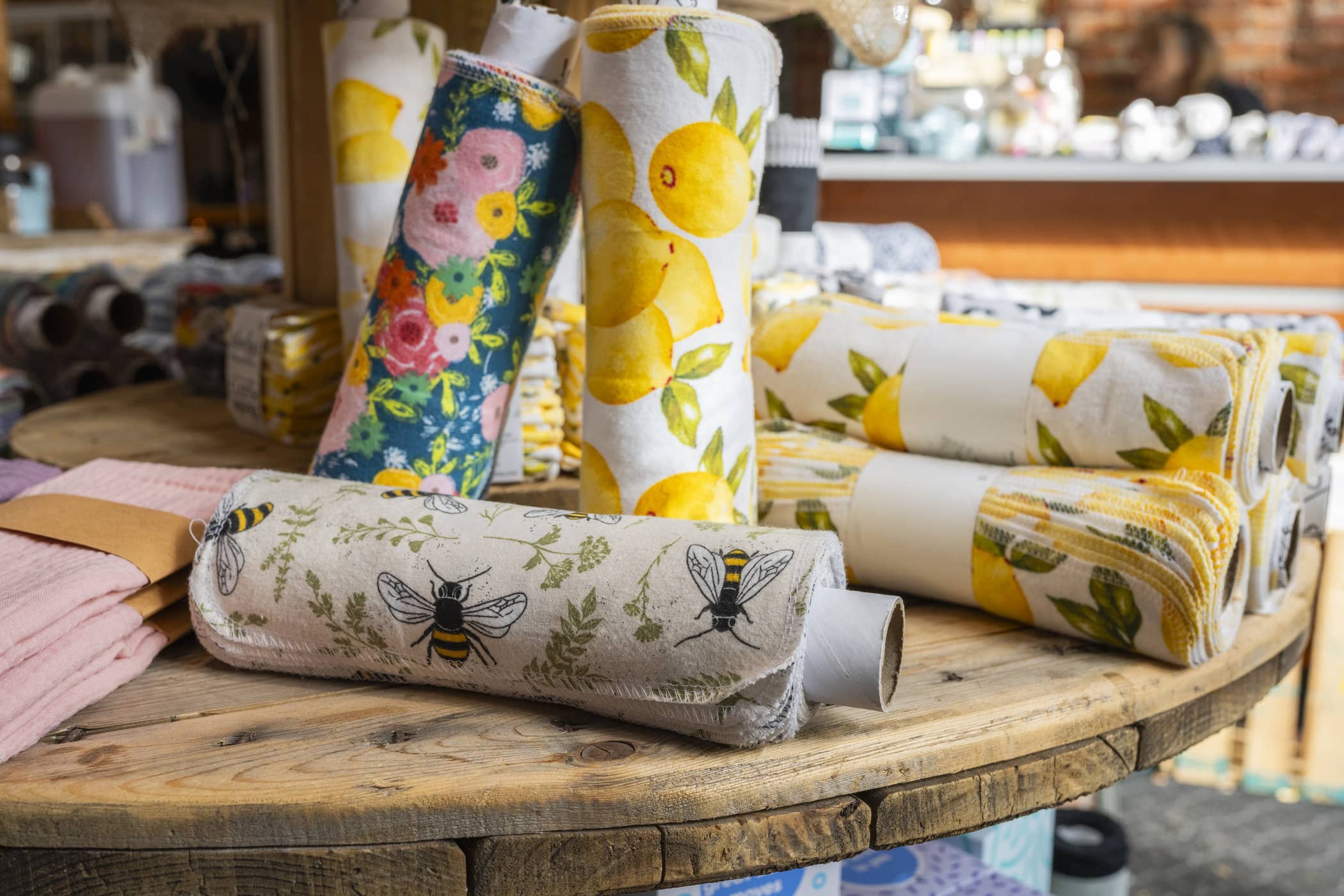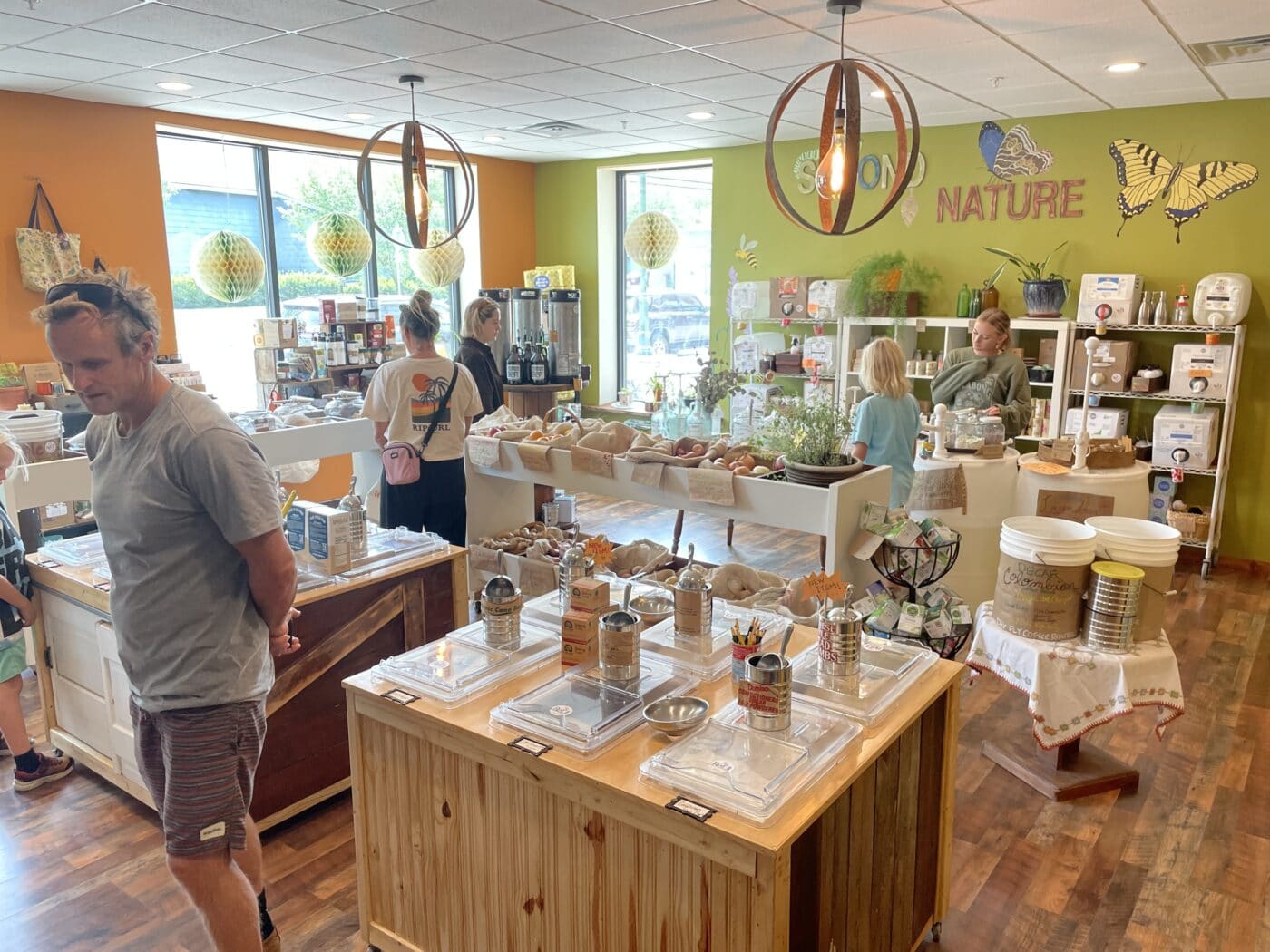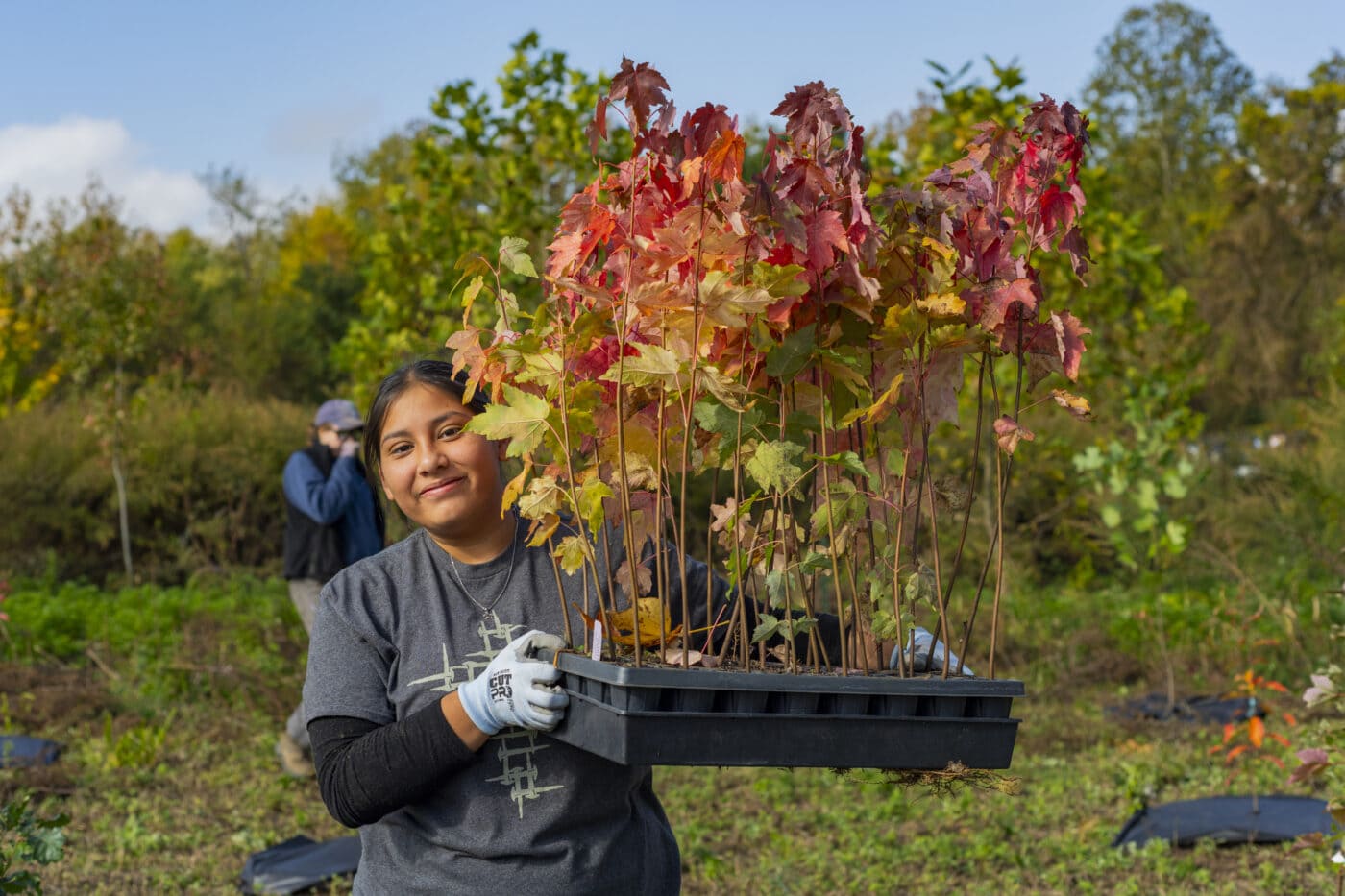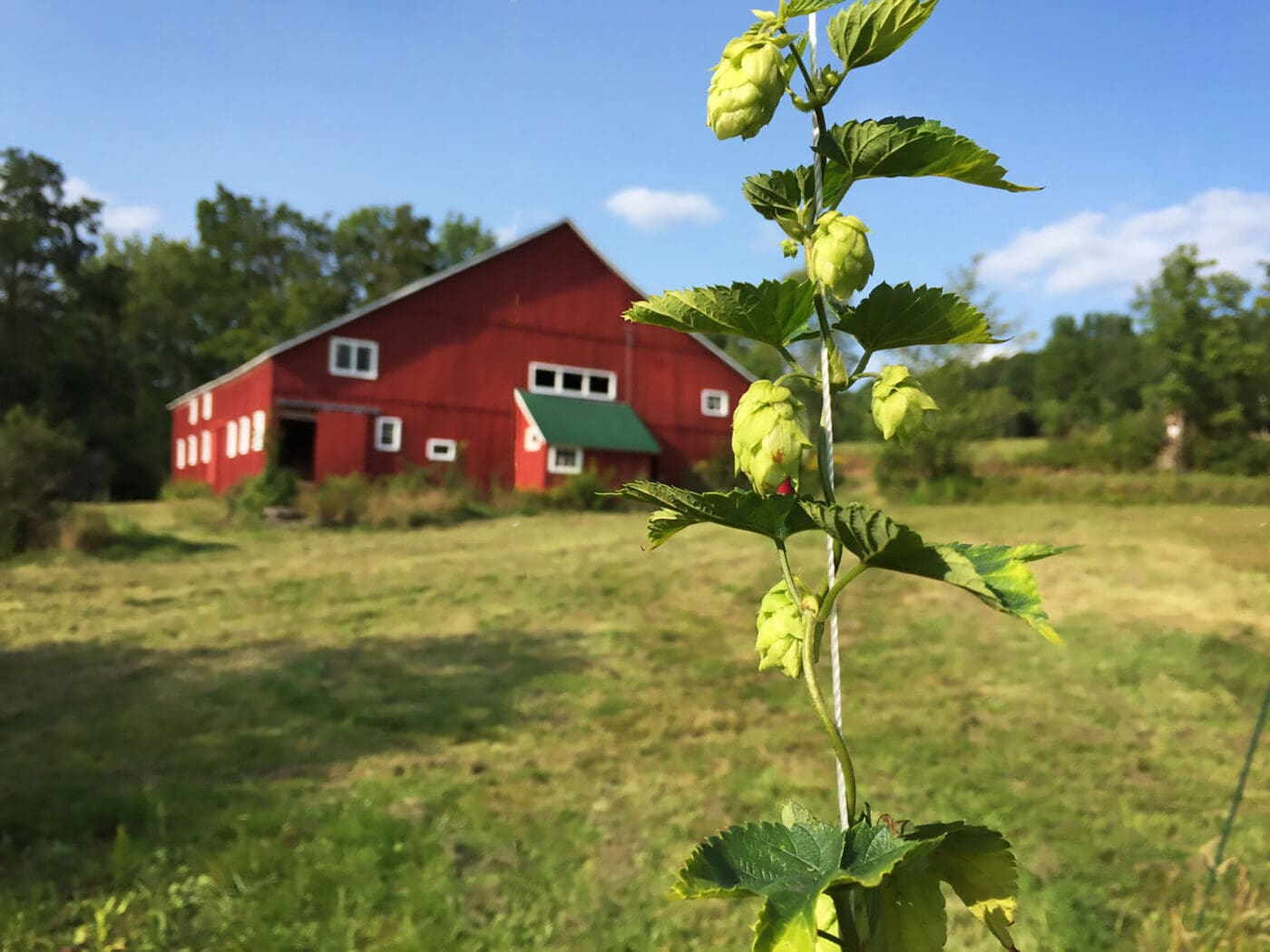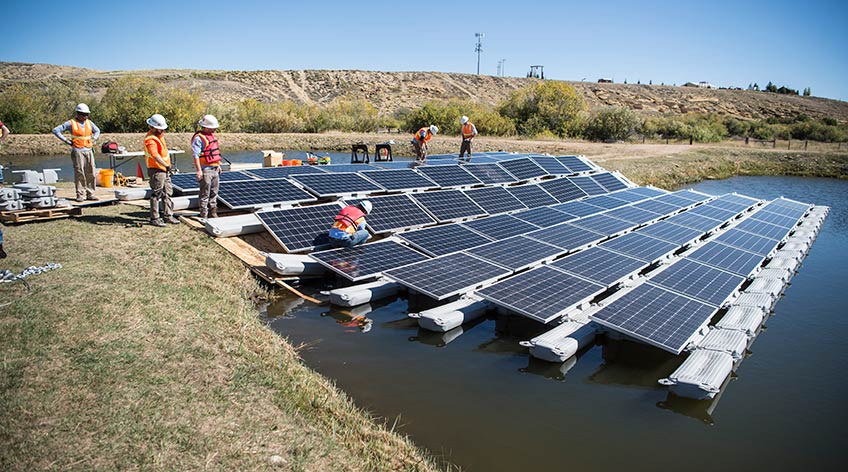The holiday season gives us one last chance to gather, give, dine, and indulge before the year ends. But with the seemingly endless number of tasks that go along with dinners, get-togethers, and school functions, sustainability isn’t often a top priority and the season is known to generate an enormous amount of waste. No matter how you celebrate, sustainability can still be woven into your traditions, or help you to create new ones.

One example is by choosing natural winter decor. While reusable decorations may fit a trendy aesthetic, those shatter-proof plastic ornaments and glitter-coated tchotchkes are made from forever-plastics that often end up in a landfill. By decorating the rest of your home with natural, even foraged, materials, you’ll have beautiful decor that even the kids can help create.
“Dehydrated orange slices can make a great light-catcher,” says Chelsea Evenson, owner of Odd Daughter Vintage, a shop located within Hyperbole, a Beacon-based retailer that sells artisan-crafted goods and more. “It’s a tradition with my kids to make natural decor like those or pomander balls made from oranges with whole cloves poked in — they smell so good.”
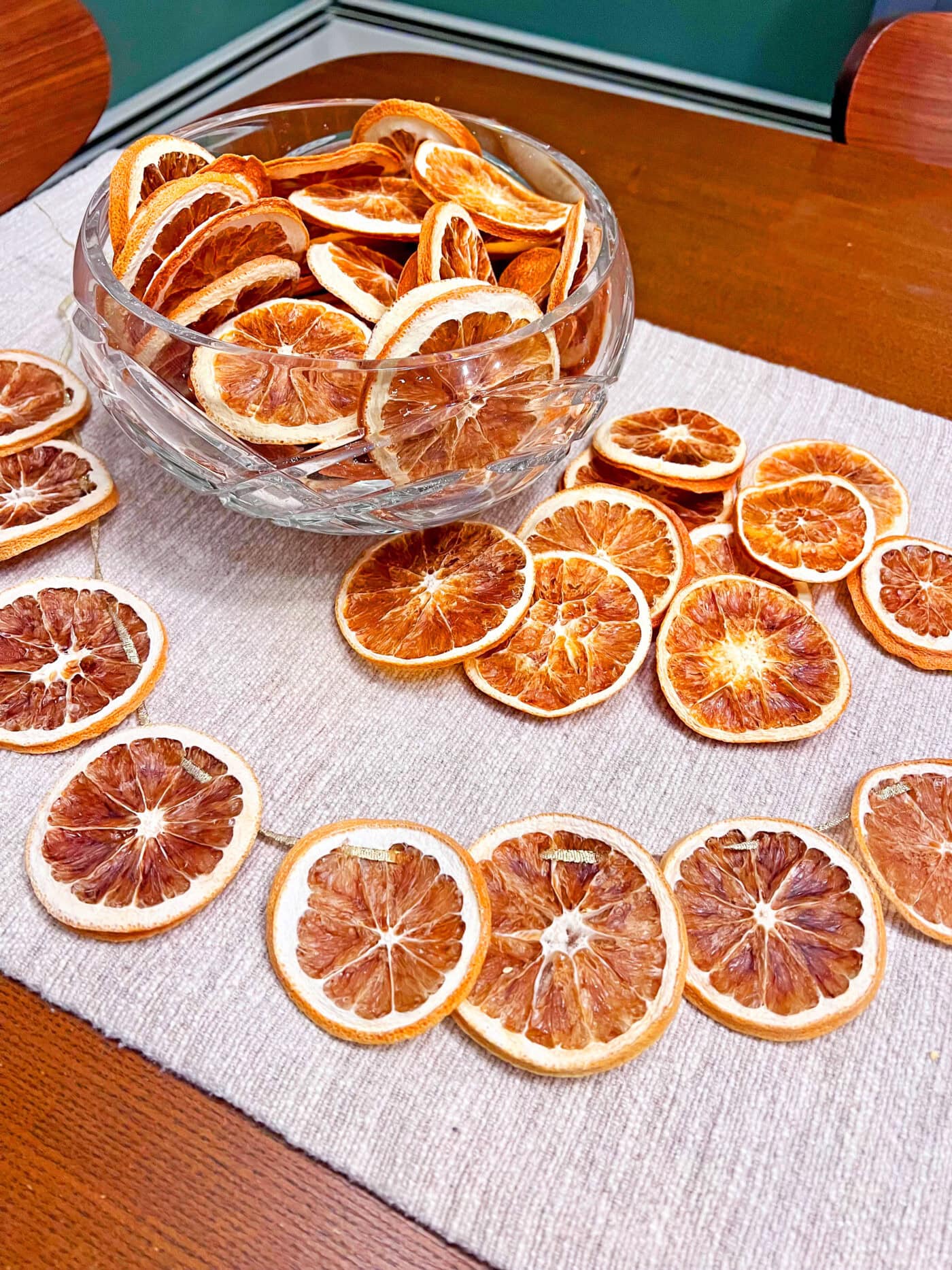
Did you know that an artificial tree would need to be reused for more than 20 years to offset its impact? A real tree can be recycled, mulched, or even kept potted year-round, and its branches can be used as additional decor.
Evenson also suggests using found objects as a centerpiece, such as purchasing a thrifted crystal bowl and filling with pine cones, pepperberries, and evergreen branches, surrounding a pillar candle. Or, creating reusable decor from upcycled household objects. “Another family tradition we have is making brown paper bag stars,” she says. “All you need are some brown paper lunch bags, glue to attach the bags, and scissors to cut the bags in the same way you’d make a paper snowflake. When you unravel them, you’re left with giant 3-D stars that you can use over the years.”

Thrift shopping is not only eco-conscious, but also on-trend — vintage holiday vibes are in. “I think nostalgia is a common theme this year because there’s been a lot of conflict around us and that can be tough on people’s spirits, so they yearn for feelings of comfort,” Evenson says. She also suggests using thrift-store finds in new ways, like trinkets or brooches as place settings for holiday meals.
From her home base in Staatsburg, Jamila Dawkins upcycles secondhand and broken jewelry pieces to create handcrafted ear cuffs (no piercings necessary) and other wearable art. No stranger to thrifting, she offers an often overlooked idea for gifting and for hosting gatherings. “Don’t sleep on estate sales,” she says. “It’s no secret that they don’t make things like they used to. Estate sales, many of which you can view and/or bid on online, are great places to find well-maintained and affordable items without calling on Amazon to produce, package, and ship yet another disposable thing.”

In Kingston, owner Kaitlyn Murray offers reusable fabric gift wrapping with every purchase at her shop Apres Maison and sustainable clothing line La Vie Apres L’Amour. “We love to use fabric gift wrapping, known [in Japanese tradition] as furoshiki wrapping cloth. It creates a beautiful, reusable, and unique presentation for your gifts,” she says.
“Another option is using brown paper bags as wrapping with a spring of rosemary or pine foraged from the yard,” Murray adds. “The best part is you can use the paper bag to start your fire or add it to your compost.”
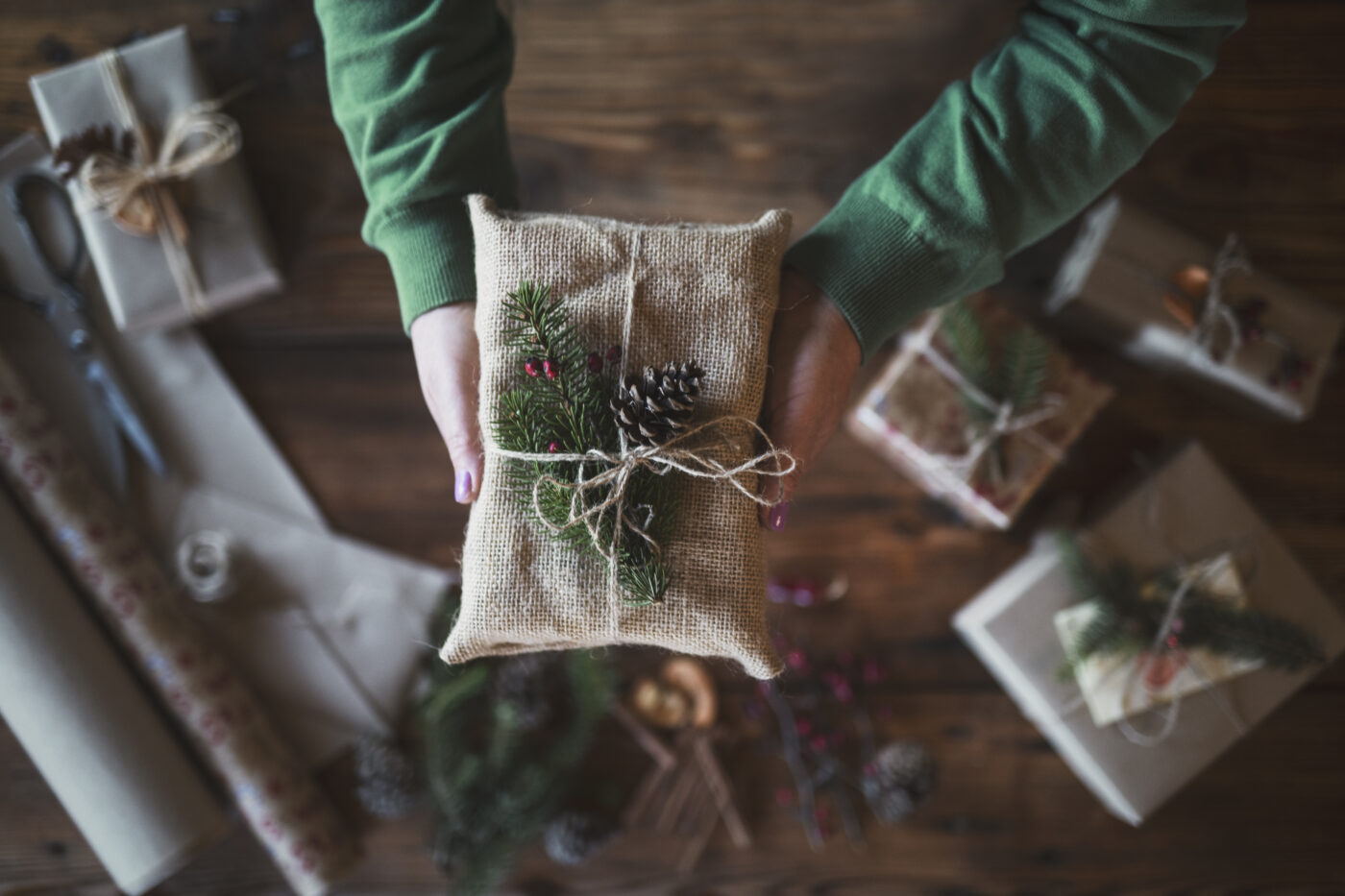
When preparing a meal, use as much local, in-season produce as possible. You can freeze extras or inquire with your local food pantry or community organizations to see if they’re in need of donations.
Zero-waste butchery, cafe, and market Dave the Butcher opened earlier this year in the mid-Hudson Valley, and owner Dave Mountain offers more food tips. “Save the bones of your roast and the clippings from your vegetables to make stock,” he says. “I’m talking skins and roots of onions and carrots, discarded celery … the easiest ratio is 1:1 bones to water, plus all of your clippings, for a nice, unctuous stock. Plus, it freezes, so in a few months when you’re cold, you can have soup halfway done.”
While dishes can be a bear after hosting a large dinner, reduce waste by avoiding disposables, or opting for vintage dinnerware and cutlery should you need more. Local refill stores can help you avoid plastic containers for items like soap. Shopping vintage also contributes to a reduction in overall demand for overproduced items, especially when gift shopping. Otherwise, consider gifts of experiences or donations to a good cause in someone’s honor; your generosity can make a neighbor in-need’s holiday just as special, creating more sustainability in your overall community.


